When you hear the jingle, you hear the music in your head, but do you realize what you are actually watching? Every couple that Kay advertises is a same-race couple but it’s never an interracial couple. If you dig a little deeper, you can see that they play certain races’ commercials in certain areas more than others according to advertisingdirected.com. Also, does it ever strike you that they play out this “romantic love” concept by the simplicity of a kiss between a two people? It is so played out that if you end up with a couple of the same race as you and you buy them this ring, then it will automatically work out! I personally feel that there are a lot more trials you must face in order to be a happy couple that they so easily display in their commercials. I also believe that the couples that they choose are very stereotypical, in that they are always dressed the part of a middle-to-upper-middle class lifestyle; and then when you look at it from a socioeconomic standpoint the advertisers take out more than half of the American population. I think that what Kay Jewelers and so many other advertising campaigns do well is show the cookie cutter couple. When you have the cookie cutter couple, you take out interracial couples, poor couples, same sex couples and so much more. Although it is so easy to remember their little jingle, you have to ask yourself what end goal do they have in mind?
The Kay Jeweler’s advertisements our group found remind me of the White Privilege article by Peggy McIntosh. Towards the end of the article, she writes about heterosexual privilege. From all of the advertisements that our group found, none of them featured a homosexual couple. They all featured the stereotypical heterosexual couple. This creates a very biased view about romantic love and what it’s supposed to be. Advertisements are seen by millions of people, so only showing heterosexual couples establishes that as the norm. Everything else will be seen as abnormal. These advertisements can be particularly damaging to children who are still developing their own view of society. If we are trying to build toward a more accepting and diverse society, only showing heterosexual couples on these advertisements is doing everyone a disservice. Ending heterosexual privilege isn’t going to be an easy process, but by diversifying the types of couples featured in advertisements will help. If children begin seeing advertisements featuring homosexual couples, hopefully they will no longer see that as abnormal.
The images we see, the images built up and perpetuated by the media, help shape our perception of the world. These images can often work to disempower the lowest of the social strata, and can often have unintended consequences. Pauline, in The Bluest Eye, lapped up the fancy and happy world portrayed in movies. However, it worked to worsen her perception of her own life. Because she could not be “pretty” like Jean Harlow, who she imitated, and her family and marriage could not be the happy, relatively carefree life she admired, she gave up. She found it impossible to identify the beauty and positives in her life. Similarly, those who find themselves excluded in the media, or portrayed negatively, find it hard to accept themselves and their lives. Because mixed race or same sex couples are absent or often stigmatized, it promotes a lack of acceptance in society. Life becomes increasingly difficult for those breaking from “the norm.” More diverse and accepting images could help eliminate the narrow image of the “proper” and “normal” to better reflect reality. This would likely help broaden acceptance and alleviate some of the problems of self-hate plaguing society in this day and age.
I think it’s important that we look at this ad in a different way. When thinking specifically about wedding rings and the Kay commercials it is easy to forget that there are many forms of proposal across cultures and some cultures suggest that it’s a better idea to wait to kiss until after they’ve said their “I do’s” at the altar, or jump over the broom, or whatever other cultural norm they partake in at their wedding. In the piece “It’s Not an Oxymoron: The Search for an Arab Feminism” by Susan Muaddi Darraj, she makes a point of talking about the Arab rituals her and her husband went through in order to pay homage to the traditions her family practiced culturally. I think it’s important to remember that not all families, cultures, religions, sexualities will want to have a traditional Christian wedding that we’ve come to be so accustomed to in America. Even though I think it’s easy for Kay Jewelers to get their point across I think it’s important that as a jewelry company that they pay attention to the range in their demographic and how they will connect to their commercials. What kind of messages are they sending across cultures? Maybe not a good one.
Chelsea, Codie, Darshan, and Alex, Intro to Women’s Studies


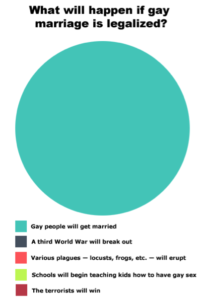

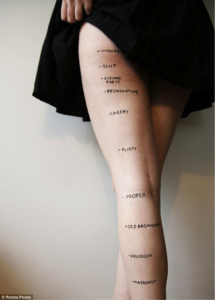
 This photo is seen as a controlling image to women alike. This is a photo of a famous actress, Ashley Greene, and it is incredibly suggestive. The topics in bold are suggesting that she is sexual and concerned about her imagine, when her article (noted in a small, white font) talks about how “ballsy” she is. This is inviting people to see how demure she is as a woman, yet they’re talking about her being an empowered woman. It’s incredibly demeaning to women. We think that the article is not only a contemporary way of showing sexual discrimination, but also functions as an image that we as woman should admire.
This photo is seen as a controlling image to women alike. This is a photo of a famous actress, Ashley Greene, and it is incredibly suggestive. The topics in bold are suggesting that she is sexual and concerned about her imagine, when her article (noted in a small, white font) talks about how “ballsy” she is. This is inviting people to see how demure she is as a woman, yet they’re talking about her being an empowered woman. It’s incredibly demeaning to women. We think that the article is not only a contemporary way of showing sexual discrimination, but also functions as an image that we as woman should admire.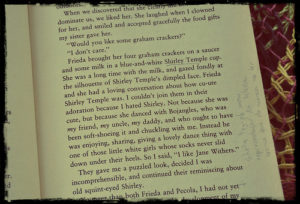
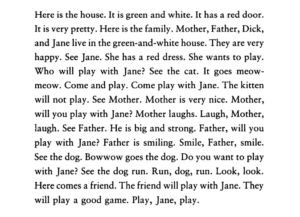

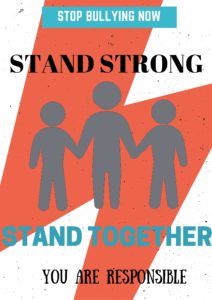
Recent Comments